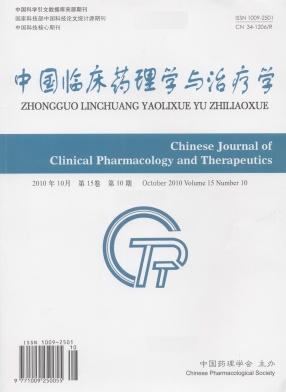Effect of Sanchi on hepatic expression of SREBP1c in rats with alcoholic liver disease
SU Yan-xia, XUN Yun-hao, CHEN Zhi-yun, SHI Jun-ping
2011, 16(2):
148-154.
 Asbtract
(
542 )
Asbtract
(
542 )
 PDF (499KB)
(
296
)
References |
Related Articles |
Metrics
PDF (499KB)
(
296
)
References |
Related Articles |
Metrics
AIM: To evaluate the effect of Sanchi on hepatic expression of sterol regulatory element binding protein (SREBP)-1c in rats with alcoholic liver disease(ALD).METHODS: 110 SD male rats were divided into normal group(n=30), control group(n=35), high-dose Sanchi group(n=15), low-dose Sanchi group(n=15) and Tiopronin group(n=15) randomly. A formula of ethanol-corn oil-pyrazole mixture was selected to induce ALD model by feeding for 14 weeks continually. Meanwhile, rats of high-dose Sanchi group, low-dose Sanchi group and Tiopronin group were administered with 1.2 g/(kg·d) Sanchi,0.6 g/(kg·d) Sanchi and 0.1 g/(kg·d) Tiopronin respectively. For investigating dynamic histologic changes,10 rats in normal group and 8 rats in control group were sacrificed at the 4th week,8th week,14th week by turns, and the others were sacrificed at 14th week. Histopathological scores were assessed by microscopic examination of HE and Masson staining of the right lobe of liver. The hepatic expression of SREBP1c were detected with immunohistochemistry, mRNA levels of SREBP1c and the targeting gene, acetyl-CoA-synthetase(ACS) and fatty acid synthetase(FAS) were detected by RT-PCR.RESULTS:(1)Compared with the rats in normal group, rats in control group developed higher steatosis scores and inflammation scores at every point (P<0.01). (2)In normal group, the hepatic expression of SREBP1c, ACS and FAS mRNA were low, which increased significantly as the time flied in model rats (P<0.01 or 0.05). (3)Hepatic expression of SREBP-1c in model group were higher than those of normal group at 8th and 14th week(P<0.01or 0.05), respectively. (4)High-dose Sanchi,low-dose Sanchi,or Tiopronin ameliorated the histopathological changes remarkably(P<0.01 or 0.05), the mRNA of hepatic SREBP-1c, ACS and FAS, together with SREBP-1c, were obviously inhibited(P<0.01 or 0.05).CONCLUSION: Sanchi can remarkably improve the hepatic steatosis and inflammation, restrain the hepatic expression of SREBP1c, a pivotal signal regulating liver lipid metabolism, and the mRNA of hepatic SREBP1c, ACS and FAS, then delay the exacerbation of ALD.


